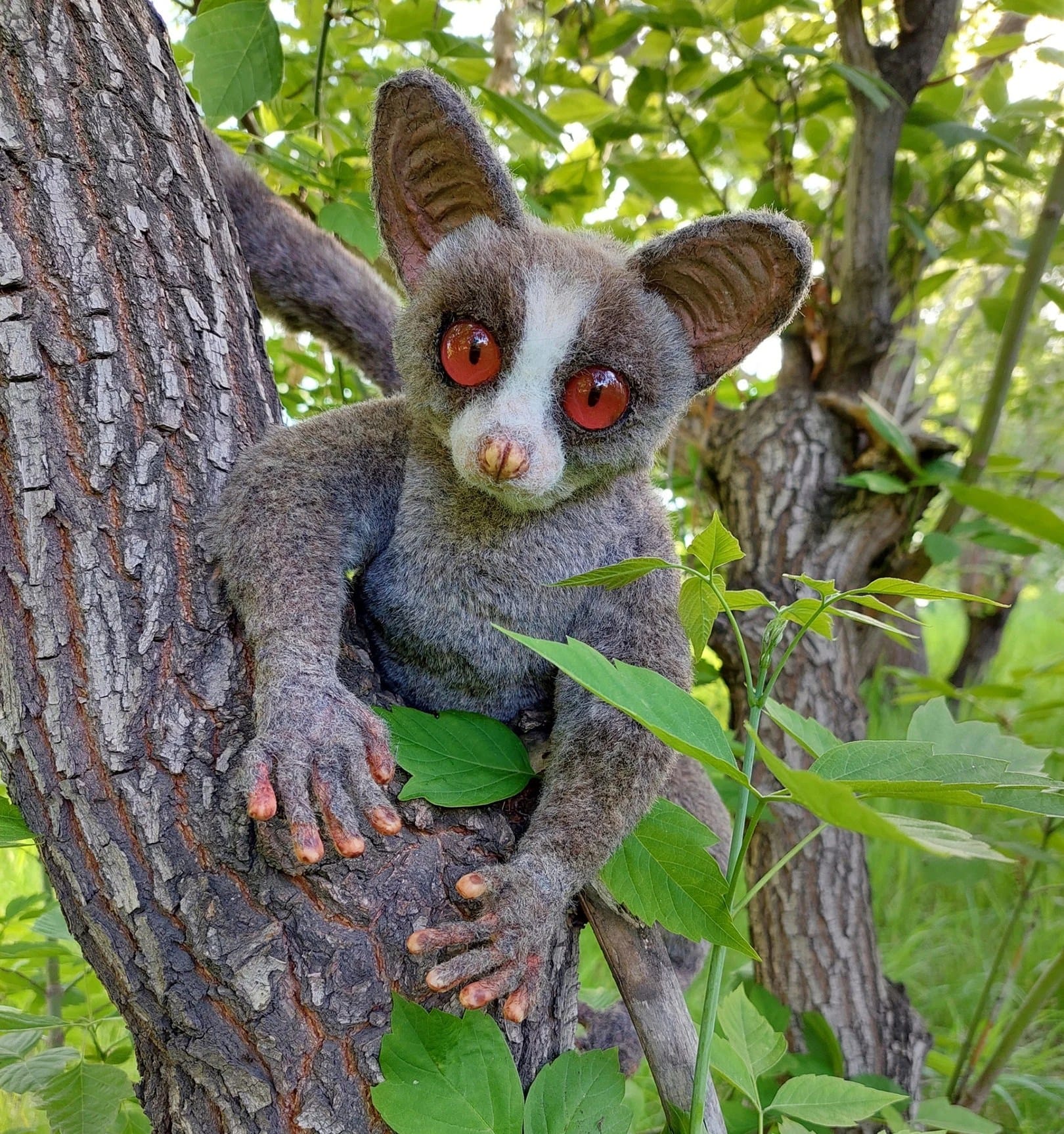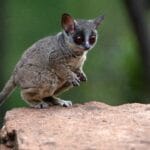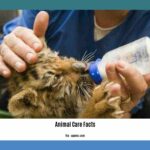Galagos (bushbabies) are undeniably adorable creatures captivating hearts across social media. However, their captivating charm often overshadows the complex realities of providing proper care for these unique primates. Before you welcome a bushbaby into your home, it’s crucial to understand the ethical considerations and significant commitment involved in providing a safe, enriching, and fulfilling life for these fascinating animals.
Can a Bushbaby Really Be a Pet?
While the internet is filled with adorable images of bushbabies, it’s essential to look beyond the cuteness and consider the commitment of having one as a pet. Here’s a breakdown of what you really need to know before you consider bringing a bushbaby home:
Navigating Legality and Permits
Owning a bushbaby isn’t as straightforward as having a cat or a dog. Laws governing exotic animals like bushbabies vary significantly depending on your location. Some areas may impose outright bans, while others might require special permits that are difficult to obtain. Before you even begin searching for a breeder, thoroughly research your local and state regulations. Contact your local animal control or wildlife agency to determine the specific rules in your area.
Recreating the Rainforest: Housing a Bushbaby
Bushbabies are designed for a life of leaping and climbing. Their natural habitat is the rainforest, and their ideal home would resemble this environment as closely as possible. Forget a standard cage – these acrobatic creatures need a spacious enclosure with ample vertical space to climb, jump, and exercise. Think tall cages, sturdy climbing structures, branches, and platforms. Given their nocturnal nature, they’ll be most active during the night, so be prepared for some after-dark activity.
Beyond Kibble: The Bushbaby Diet
Feeding a bushbaby isn’t as easy as pouring kibble into a bowl. They have very specific dietary requirements that can be challenging to replicate in a home environment. Their natural diet consists of insects, fresh fruits, and specialized tree gums, which can be difficult to source and manage.
Keeping Bushbabies Engaged: Enrichment is Key
Imagine being confined to a cage with little to no stimulation – not a happy thought, right? The same applies to bushbabies. Enrichment is crucial for their mental and physical well-being. They need puzzle feeders, climbing structures, and a variety of toys to challenge their minds and prevent boredom.
The Ethical Considerations of Owning Exotic Animals
While the desire to provide a loving home for a bushbaby is admirable, it’s crucial to consider the ethical implications of the exotic pet trade. Sadly, the demand for exotic pets can fuel the illegal capture and trade of wild animals, harming wild populations. If you’re determined to have a bushbaby as a pet, prioritize ethical sourcing.
Key Points for Ethical Galago Ownership:
- Legality: Verify if owning a galago is permitted in your area.
- Financial Responsibility: Prepare for significant expenses related to food, enclosure, veterinary care, and enrichment.
- Lifestyle Compatibility: Galagos are nocturnal, social, and have a long lifespan. Ensure your lifestyle can provide for their unique needs.
- Ethical Considerations: Weigh the ethical implications of owning a primate and explore support for conservation efforts.
- Reputable Breeder: Look for a breeder who demonstrates ethical practices, provides health records, offers ongoing support, and has well-maintained facilities.
- Trust Your Instincts: Visit the breeder’s site to observe the galagos’ conditions and trust your judgment about their well-being.
- Ultimate Goal: Provide a safe, loving, and enriching environment for the galago’s well-being.
Finding a Reputable Breeder
If you’ve weighed the ethical considerations and are confident in your ability to meet a bushbaby’s needs, the next step is finding a responsible breeder. A reputable breeder will prioritize the well-being of their animals over profit. They should:
- Demonstrate Ethical Practices: Be transparent about their breeding program and committed to animal welfare.
- Provide Health Records: Provide documentation of the galago’s health history, lineage, and any necessary vaccinations.
- Offer Ongoing Support: A responsible breeder cares about the animals they place and will be available to answer your questions even after you’ve brought your galago home.
Don’t hesitate to ask questions and visit the breeder’s facilities if possible. Observe the galagos’ living conditions to ensure they’re healthy, well-cared for, and living in a clean and stimulating environment.
Can You Have a Bushbaby as a Pet?
The answer isn’t a simple yes or no. It’s complicated. Owning a bushbaby is a significant responsibility that demands substantial commitment, resources, and knowledge. Before taking the plunge, carefully consider if you can truly provide a happy, healthy, and fulfilling life for these unique and demanding creatures.
Unveiling the Lifespan of a Galago: From the Wild to Captivity
The lifespan of a galago, much like that of many creatures, is significantly impacted by its environment. While these curious primates can thrive in the protective settings of zoos and sanctuaries, their wild counterparts face a more challenging reality.
A Tale of Two Worlds
Records from zoological facilities suggest that galagos in captivity can live for 12 to 16 years, and sometimes even longer. [https://www.lolaapp.com/]. This difference can be attributed to the consistent access to food, protection from predators, and veterinary care that a controlled environment provides.
However, for galagos navigating the wilds of African forests, the story is different. The average lifespan of a wild galago is estimated to be a mere 3 to 4 years. [https://www.lolaapp.com/].
The Challenges of a Wild Existence
A myriad of factors contributes to the shorter lifespans of wild galagos. Predation is a constant threat, with snakes, owls, and larger mammals posing significant risks. Additionally, habitat loss due to deforestation and human encroachment shrinks their resources and increases their vulnerability. Competition for limited food and water sources, particularly during dry seasons, further impacts their survival.
The Importance of Research and Conservation
Studying galago lifespans in both captivity and the wild is crucial for understanding their biology, ecological roles, and the impact of environmental pressures on their populations. This knowledge is fundamental to developing and implementing effective conservation strategies to protect these fascinating primates and their delicate habitats.
Galago Jumps: How High Can These Acrobatic Primates Leap?
Galagos, also known as bushbabies, are famous for their incredible jumping abilities. These small primates can defy gravity with leaps that seem to belong in a superhero movie!
Leaping to New Heights
Imagine a creature the size of a squirrel effortlessly clearing a basketball hoop – that’s the kind of athleticism we’re talking about. Galagos can jump an astounding 2.25 meters (over 7 feet) high, which is more than twice their height! [https://www.lolaapp.com/]. To put that into perspective, that would be like a human effortlessly leaping over a two-story building.
The Secret to Their Superpower
How do they manage such incredible feats? The answer lies within their powerful leg muscles, which account for a significant 25% of their total body weight. [https://www.lolaapp.com/]. These muscles act like tightly wound springs, capable of generating immense power, propelling them skyward with incredible force.
More Than Just a Vertical Leap
While their vertical jumps are impressive, galagos are equally skilled at horizontal leaps. These agile primates can cover distances of 3 to 5 meters (approximately 10 to 16 feet) in a single bound! [https://www.lolaapp.com/] This incredible combination of height and distance is crucial for navigating their arboreal homes, effectively hunting insects, and evading predators.
In conclusion, owning a bushbaby is a decision that requires careful consideration. They are not suitable pets for everyone due to their specialized needs, potential for disease, and the ethical complexities surrounding the exotic pet trade.
- Unveiling the Enigma: Mansoureh Khojasteh Bagherzadeh’s Public Appearances & Private Life in Iran - July 18, 2025
- Unveiling the Mystery: Mansoureh Khojasteh Bagherzadeh’s Husband: A Rare Glimpse into a Private Life - July 18, 2025
- Unveiling Masoud Khamenei’s Mother: Power, Influence, and Iran’s Future - July 18, 2025

















1 thought on “Where to Find a Galago for Sale: Your Ethical Guide to Bushbaby Breeders”
Comments are closed.